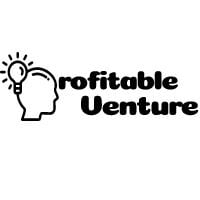Do you want to know the difference between Business model and operating model? If YES, here is a detailed similarities and differences of both models.
Basically, a business model describes the way that a business captures value. On the other hand, an operating model tends to describe the way in which a business is run. Understanding the terminologies in the business world is an essential part of business an entrepreneur should not joke with.
You would not want to be in a business meeting or conference and get confused. In this article, we will look at two business terminologies that are frequently used especially when you want to scale up a business. They are a business model and an operating model.
The essence of this article is to clearly differentiate these two-business terminologies and perhaps break them down in such a way that it will be easy for everyone to understand.
A business model defines the following:
- the stakeholders with whom the organization will do business with, particularly the “mission stakeholder” or “customer”
- the offer or promise that the organization is making to the mission stakeholder – often referred to as the “value proposition”
- the resulting financial model (income statement and balance sheet) taking account of size and growth ambitions
- the operating model that makes it possible for the organization to deliver the value proposition
Established businesses must change their business model on a regular basis or they will fail to predict future trends and issues. Business models also assist investors in evaluating companies of interest to them, and employees in understanding the future of a company they may want to work for.
In general, a business model should identify your customers, comprehend the problem you are attempting to solve, and describe the ways that your business will profit.
There are several types of business models and some good examples are Business -To- Business Models (B2B), Business -To-Consumer Models (B2C), Subscription Based Models, On-Demand Business Models, Affiliate Business Models, Freemium Business Models, and Fee-for-Service Business Models et al.
An operating model defines the following:
- the main work processes that are needed to create and deliver the value proposition (the products or services or benefits that the organization chooses to provide for its “customers” or “beneficiaries”
- the equipment and technology needed to execute these core processes
- the information systems needed to support these core processes
- the processes needed to support the core processes, such as financial processes or HR processes
- the suppliers needed to support the processes and the supplier agreements needed to keep the most important suppliers engaged
- the people needed to do the work and the “offer” that will attract and retain these people
- the structure of the organization, decision rights and accountabilities needed to ‘govern’ and support the people
- the cultural context that will help the people be effective
- the locations, buildings and ambiance where the core and support processes will be executed
- the calendar of management meetings and scorecard needed to run the organization
Operating models can assist managers in understanding how changes to one section of the business may affect the value delivered by other components. Target operational models show how a company intends to structure and operate its operations in the future.
The core components of an operating model include; business capability models, capability maturity models, management structures, resource portfolios, supplier matrices, people models, IT priorities, location maps, and decision grids. Please note that the operating models value delivery chain covers inbound logistics, operations, outbound logistics, marketing and sales, and service.
Business Model vs Operating Model – What is the Difference?
In a nutshell, the core difference between a business model and an operating model is that a business model describes how a business generates value. For instance, a car manufacturer designs and produces cars. The cars that he produces are far more valuable than the raw materials that were combined to produce the car. Therefore, the business captures value.
On the other hand operating models describe the way that a business structures its core processes. For instance, a car company may source parts from a large number of countries and build a complex global supply chain driven by technology tools.
Alternatively, the company may work with a limited number of trusted suppliers and have few supply chain capabilities of its own.
In conclusion,
Over and above, designing your business model and operating model is critical to the survival of your business. Whether you are building one for the first time or working on a previous one, doing so will help you better understand how to implement your plan and of course increase the profitability of your business.
